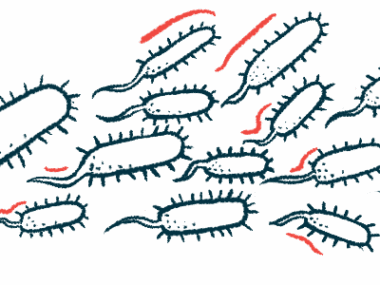Infant CAD May Be Treated With IV Immunoglobulin, Case Report Suggests
Written by |

The case of an infant who developed cold agglutinin disease (CAD) shortly after being vaccinated suggests that intravenous immunoglobulin may be an effective treatment for young children with the autoimmune disorder, according to a new report.
The report, “Cold agglutinin disease in an infant: remission after intravenous immunoglobulin,” was published in Pediatrics International.
CAD is a form of autoimmune hemolytic anemia (AIHA), a group of disorders in which the immune system attacks and kills red blood cells. Because CAD and other forms of AIHA are very rare in children, there aren’t established treatments for pediatric patients with these diseases.
The new report describes the case of a female Japanese infant who, at the age of two months, was taken to the hospital due to jaundice — a yellowish color in the skin and eyes — and poor feeding three days after receiving the first doses of two pneumonia vaccines.
Lab tests revealed abnormalities that included anemia, as well as the presence of antibodies that targeted red blood cells at low temperatures.
“These laboratory findings led to a diagnosis of low-titer CAD,” the investigators wrote. Of note, a low-titer result means the lab test indicated low levels of CAD antibodies.
The patient was given red blood cell transfusions to combat the anemia. She also was treated with the steroid prednisolone. This improved laboratory parameters, but when the prednisolone dose was decreased, the baby’s anemia worsened again.
As a result, the prednisolone dose was increased, and the infant was treated with two cycles of intravenous (into-the-vein) immunoglobulin (IVIG) — an antibody-based blood product that, in AIHA, is thought to reduce problematic immune activity.
After this treatment, the baby’s laboratory values normalized and her anemia resolved. The patient was weaned off of prednisolone over the course of two months, and then discharged from the hospital. Following that, she was given oral hydrocortisone, another steroid medication, for two months.
“At the 24-month follow-up after diagnosis, the patient continued to do well without subsequent episodes of hemolysis [red blood cell destruction],” the investigators wrote.
The team noted that, while there is some data supporting the efficacy of IVIG in other forms of AIHA, there is little data on this treatment’s use in CAD.
“Intravenous immunoglobulin may be helpful in CAD, especially in infancy and young childhood, for which other treatment options are difficult to apply,” they wrote.
Although it’s impossible to definitively say that this baby’s CAD was caused by vaccinations, the sequence of events in this case suggests a potential link. While extremely rare, there have been previous reports of CAD and other forms of AIHA developing after a vaccination.
“This case suggests that vaccination can be followed by the onset of CAD,” the team wrote.
“There is insufficient evidence about the relationship between vaccination and AIHA,” they added, noting a need for further research.
“We should consider postvaccination AIHA in the differential diagnosis of jaundice or poor feeding after vaccination,” the team concluded.





